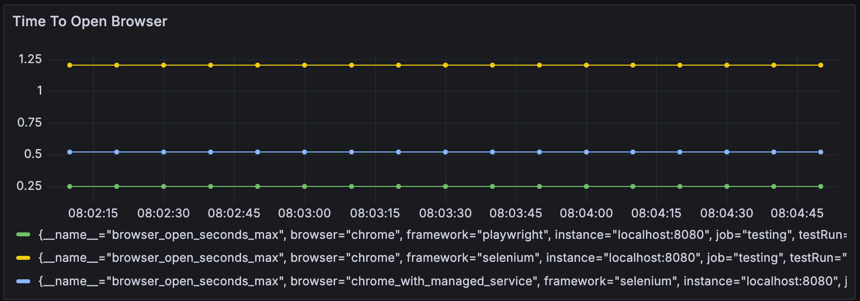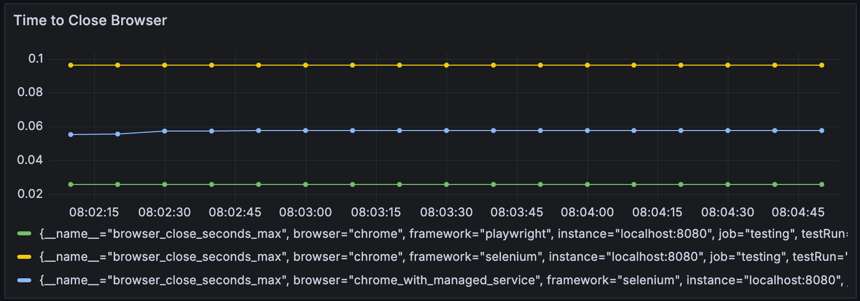Introduction
In Part 1, I did some intial measurments to compare the difference in speed between Selenium and Playwright.
One of the things that stood out was the difference in time to provision a browser. Playwright took approximately 250ms whilst Selenium took approximately 1.2 seconds.
I was keen to see if this difference could be reduced.
Source Code
All source code for this post can be found in GitHub. See the README for instructions on how to run the tests.
Methodology
- Create shared ChromeDriver service.
- Create Selenium browser implementation that uses a shared ChromeDriver service.
- Run tests again to compare the difference in browser startup/close time.
Creating and using the shared ChromeDriver service
I created a class ChromeDriverServiceManager
The constructor creates a ChromeDriverService instance.
private ChromeDriverServiceManager() {
MetricsRegistry.getInstance().timer("chromeDriverService.init", "framework", "selenium").record(() -> {
service = new ChromeDriverService.Builder()
.usingAnyFreePort()
.build();
});
}
Using the shared service
I updated the SeleniumBrowser class to use the shared ChromeDriver service. Note we now need to use RemoteWebdriver.
browser = new RemoteWebDriver(ChromeDriverServiceManager.getInstance().service.getUrl(), new ChromeOptions());
Results
Browser Lifecycle

By reusing the ChromeDriver service, the time to open a browser has been reduced to approximately 500ms.
For comparison, starting up a browser using a default ChromeDriver service takes approximately 1.2 seconds.
Playwright is still faster at 250ms, but the gap can be narrowed quite easily.
Time to Close Browser

Conclusion and next steps
I have demonstrated a simple way of improving browser startup times using Selenium. It is worth noting that this applies when using a local driver. If you are running on something like Sauce Labs or Browser Stack, this won’t apply.
In the next post I will investigate running the selenium tests in headless mode. I expect this will improve run times as we no longer need to render the page to the screen, but measuring this should prove interesting.